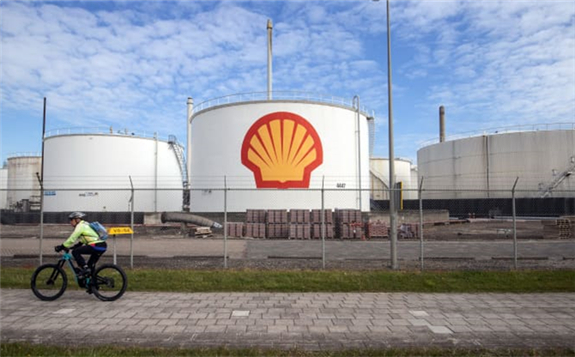Oil giant Royal Dutch Shell is reviewing its holdings in the largest oil field in the United States for a possible sale as the company looks to focus on its most profitable oil-and-gas assets and grow its low-carbon investments, according to sources familiar with the matter.
 A cyclist passes oil silos at the Royal Dutch Shell Pernis refinery in Rotterdam, Netherlands, on Tuesday, April 27, 2021. Peter Boer | Bloomberg | Getty Images
A cyclist passes oil silos at the Royal Dutch Shell Pernis refinery in Rotterdam, Netherlands, on Tuesday, April 27, 2021. Peter Boer | Bloomberg | Getty Images
The sale could be for part or all of Shell’s about 260,000 acres (105,200 hectares) in the Permian Basin, located mostly in Texas. The holdings could be worth as much as $10 billion, the sources said, on condition of anonymity because the talks are private.
CNBC has independently confirmed that a sale is not imminent, but ongoing talks with a buyer or potentially multiple buyers are ongoing. Some of the acreage in question is part of a joint venture with Occidental.
Shell declined to comment.
Shell is one of the world’s largest oil companies, all of which have been under pressure from investors to reduce fossil-fuel investments to stem changes to the global climate brought on by carbon emissions. Shell, BP Plc and TotalEnergies have pledged to lower emissions through increased investment in renewables while divesting some oil and gas holdings.
Mergers and acquisitions activity in the top U.S. shale field jumped in the last year as some firms sought to bolster holdings and others looked to take advantage of rising prices to sell. U.S. oil futures are up 49% this year to nearly $72 per barrel, more than double their 2020 low as oil demand returned with the pandemic ebbing.
Earlier this year, Shell set out one of the sector’s most ambitious climate strategies, with a target to cut the carbon intensity of its products by at least 6% by 2023, 20% by 2030, 45% by 2035, and by 100% by 2050 from 2016 levels. However, a Dutch court said last month that Shell’s efforts are not enough, ordering it to lower emissions by 45% by 2030 from 2019 levels.
Last month, the International Energy Agency (IEA) said in a report that investments in new fossil fuel projects should stop immediately if consumers wanted to meet U.N.-backed targets aimed at limiting global warming.
Oil majors, including Shell, say the world will need substantial new investment in oil and gas for some years to come to meet demand for motor fuels and chemicals.
Shell’s oil and gas production in the Permian from company-operated and non-operated rigs averaged 193,000 barrels of oil equivalent per day in 2020, around 6% of its total output that year, according to its website.
The Permian produces roughly 4.5 million barrels of oil a day, or about 40% of overall U.S. production.
More deal-making could take place this year, with Chevron, Exxon Mobil and others looking to shed unwanted assets and raise cash, according to industry experts. Last week, Occidental Petroleum agreed to sell some of its Permian holdings to Colgate Energy for $508 million in a move to reduce its debt.
Most Permian deals this year have been concluded at between $7,000 and $12,000 per acre, said Andrew Dittmar, an M&A analyst at energy researcher Enverus.
Rising activity has pushed up prices. In April, closely held DoublePoint Energy sold to Pioneer Natural Resources for about $40,000 per acre, a level not seen since the 2014-2016 rush by producers to grab positions in the Permian.
Several smaller shale companies including KKR-owned Independence Energy have combined this year. A lack of interest in oil IPOs have private equity owners aiming to increase their production while awaiting investor interest in new offerings.